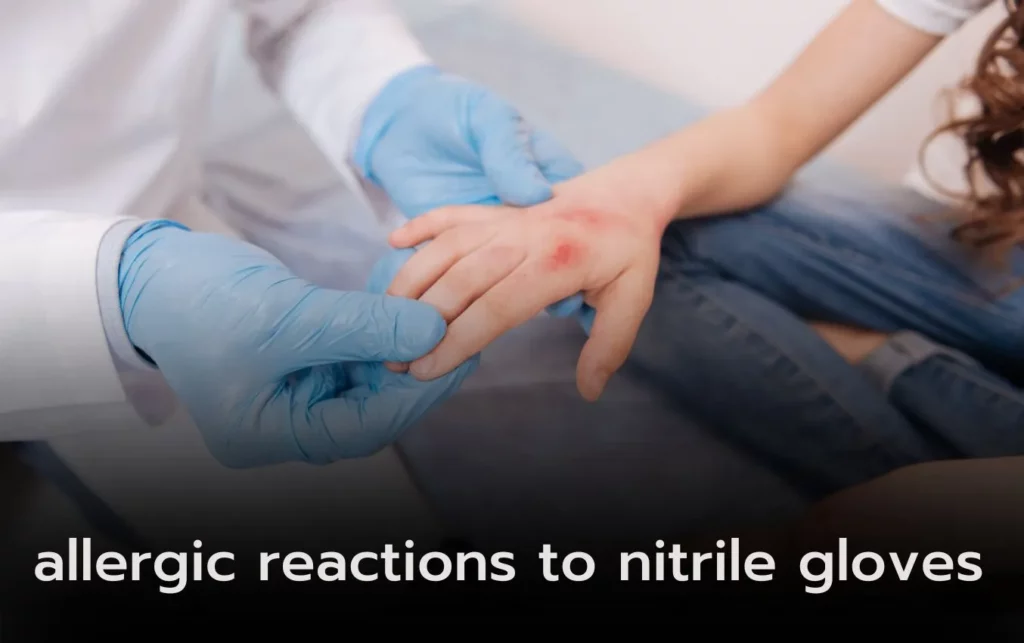Gloves, especially nitrile ones, are crucial protective gear in various industries. While nitrile gloves are known for their durability and protective qualities, they can still trigger allergic reactions in some individuals. This informative article investigates into the prevalence, types of allergic reactions, chemical sensitizers, comparisons with other gloves, and risk factors associated with nitrile gloves allergy. By understanding these factors, individuals can make informed decisions to mitigate the risks and select suitable gloves for their needs.
Table of Contents
- Prevalence of Nitrile Gloves Allergies
- Comparison to Latex Gloves
- Statistics on Allergic Reactions
- Types of Allergic Reactions
- Contact Urticaria
- Allergic Contact Dermatitis
- Chemical Sensitizers
- Ethyl Isothiocyanate (EITC) and Butyl Isothiocyanate (BITC)
- Dithiocarbamate and Thiuram Mixes
- Role in Allergic Reactions
- Comparison with Other Gloves
- Barrier Protection and Failure Rates
- Risk Factors
- History of Allergies
- Hand Dermatitis
- Repeated Exposure to Gloves
- Prevention and Mitigation
- Selecting Appropriate Gloves
- Reducing Exposure
- Skin Care and Hygiene
- Related Posts

Prevalence of Nitrile Gloves Allergies
Your hands are your most valuable tools, which is why it’s important to be cautious about potential allergic reactions to nitrile gloves. While nitrile gloves are generally associated with fewer allergic reactions compared to latex gloves, it’s still crucial to be aware of the risks and take proper precautions.
Comparison to Latex Gloves
| Nitrile Gloves | Latex Gloves |
| Nitrile gloves have lower risk of allergies | Latex gloves are more commonly linked to allergies |
| Superior barrier protection and durability | Higher failure rates compared to nitrile gloves |
| Preferred choice in healthcare and other professions | Can cause various allergic reactions in individuals |
Statistics on Allergic Reactions
Reactions to nitrile gloves can include immediate itching and wheal formation in contact urticaria, while allergic contact dermatitis may result in delayed erythematous rashes. Individuals with a history of allergies, hand dermatitis, or repeated exposure to gloves are at a higher risk of developing allergic reactions to nitrile gloves.
Types of Allergic Reactions
While nitrile gloves are generally associated with fewer allergic reactions compared to latex gloves, they can still cause allergic reactions in some individuals. Understanding the types of allergies associated with nitrile gloves is important for proper mitigation strategies.
| Contact Urticaria | Allergic Contact Dermatitis |
| • Immediate itching and wheal formation | • Delayed erythematous rashes |
| • Include histamine release | • Caused by chemical sensitizers like EITC and BITC |
| • Generally responds well to antihistamine treatment | • Can be chronic and recurring |
| • Commonly seen in latex allergies as well | • Risk factors include previous hand dermatitis |
| • Prevalence is lower in nitrile gloves | • Management includes glove selection and avoidance |
Contact Urticaria
Contact urticaria, a type of allergic reaction to nitrile gloves, is characterized by immediate itching and wheal formation upon contact. This reaction typically involves histamine release and can often be managed effectively with antihistamines.
Allergic Contact Dermatitis
Types of allergic reactions to nitrile gloves can also include allergic contact dermatitis, which manifests as delayed erythematous rashes on the skin. These reactions are often caused by specific chemical sensitizers like ethyl isothiocyanate (EITC) and butyl isothiocyanate (BITC) used in the manufacturing process of nitrile gloves.
Chemical Sensitizers
Ethyl Isothiocyanate (EITC) and Butyl Isothiocyanate (BITC)
Allergic reactions to nitrile gloves can be attributed to specific chemical sensitizers like EITC and BITC, which are used in the manufacturing process. Individuals with sensitivity to these substances may experience allergic contact dermatitis, characterized by delayed erythematous rashes.
Dithiocarbamate and Thiuram Mixes
Dithiocarbamate and thiuram mixes are also potential allergens found in nitrile gloves. These chemicals, used as accelerators in the vulcanization process, can trigger allergic reactions in susceptible individuals. It is crucial to be aware of these sensitizers to prevent adverse skin reactions.
Role in Allergic Reactions
To further elaborate, the presence of dithiocarbamate and thiuram mixes in nitrile gloves can lead to allergic contact dermatitis in users. These chemicals play a significant role in causing skin irritation and inflammation, highlighting the importance of understanding the components of protective gear.
Comparison with Other Gloves
| Vinyl Gloves | Copolymer Gloves |
| An alternative to nitrile gloves, vinyl gloves are less durable and offer lower barrier protection, resulting in higher failure rates. However, they are less likely to cause allergic reactions compared to latex gloves. | With copolymer gloves, users experience a balance between durability and flexibility. They are less likely to cause allergic reactions than latex gloves but may not provide the same level of barrier protection as nitrile gloves. |
Barrier Protection and Failure Rates
Comparison data shows that nitrile gloves are preferred over vinyl and copolymer gloves due to their superior barrier protection and lower failure rates. While vinyl and copolymer gloves have their advantages, nitrile gloves offer a higher level of protection and durability.
Risk Factors
Once again, individuals with a history of allergies, hand dermatitis, or repeated exposure to gloves are at higher risk of developing allergic reactions to nitrile gloves. Knowing these risk factors can help individuals take proactive measures to prevent potential allergic reactions.
History of Allergies
Risk of allergic reactions to nitrile gloves is higher in individuals with a history of allergies.
Hand Dermatitis
To understand the risk of allergies associated with nitrile gloves, it is important to consider the potential impact of hand dermatitis.
Hand dermatitis is a common skin condition characterized by redness, itching, and inflammation of the skin on the hands. Individuals with pre-existing hand dermatitis are more prone to developing allergic reactions to nitrile gloves due to the compromised skin barrier.
Repeated Exposure to Gloves
An important risk factor for developing allergies to nitrile gloves is repeated exposure to these protective gear.
Individuals who frequently use nitrile gloves, such as healthcare professionals and hairdressers, are at increased risk of developing allergic reactions due to prolonged and constant contact with the gloves. Hand hygiene practices and using barrier creams can help reduce the risk of allergies in these high-exposure individuals.
Prevention and Mitigation
Selecting Appropriate Gloves
Gloves made of nitrile are generally safer and less likely to cause allergic reactions compared to latex gloves. When deciding on gloves, individuals with a history of allergies should opt for nitrile gloves over latex to reduce the risk of allergic reactions.
Reducing Exposure
On top of selecting nitrile gloves, individuals can reduce their exposure to potential allergens by ensuring proper ventilation in the workplace and limiting prolonged glove use. This can help minimize the risk of developing allergic reactions to nitrile gloves.
Skin Care and Hygiene
With regular hand washing using mild soap and moisturizing after glove removal, individuals can maintain healthy skin barrier integrity, reducing the likelihood of allergic reactions. Additionally, applying an emollient cream can help keep the skin hydrated and prevent irritation.
Individuals working in professions that require the use of nitrile gloves should be mindful of the possibility of allergic reactions and familiarize themselves with the chemical sensitizers that could cause such responses. Although nitrile gloves provide better protection than latex gloves, it is still important to take precautions, especially for those with a history of allergies or dermatitis. By understanding the potential risks and factors that lead to allergies, individuals can make educated choices to reduce the likelihood of allergic reactions and maintain a safe working environment.

